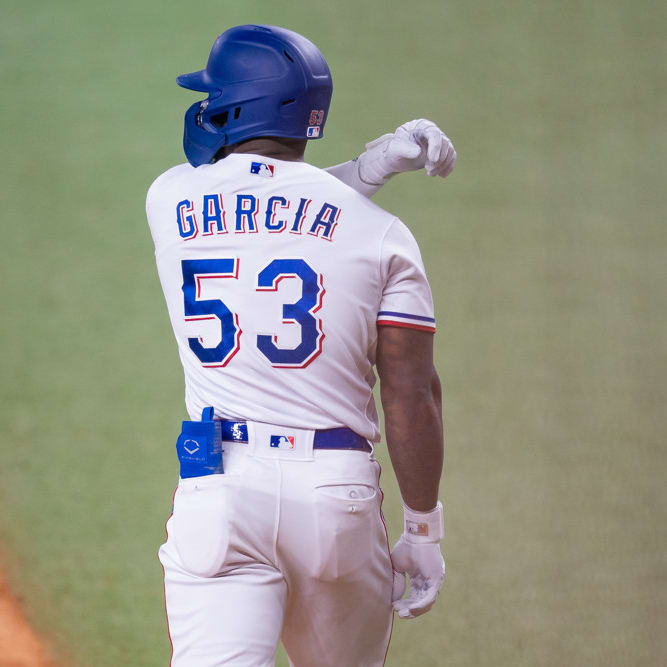With our ranking of the top-80 fantasy starting pitchers now complete, there were a handful of pitchers who slipped through the cracks of the system or who rose to the cusp of cracking the top 80 but fell just short. Before we get into list of players who missed the cut, here's a rundown of the pitchers who were ranked according to the DT system, broken down approximately 10 at a time. Introduction to the ratings
Rating NFBC SP 1-10
Rating NFBC SP 11-21
Rating DT SP 22-30 (and 19)
Rating DT SP 31-40
Rating DT SP 41-50
Rating DT SP 51-60
Rating DT SP 61-70
Rating DT SP 71-80
There was a definite funneling effect, such that the fantasy pitcher pool filled up the DT point system like a fancy wine decanter, as just 18 pitchers scored 35 or more points in the system out of a possible 50, yet 54 players fell within a narrow range, scoring 29-34 points. To some this might be viewed as a flaw in the system, but I think that it is a fairly accurate reflection of the fantasy pitcher pool, with a handful of truly elite players at the top and then a thickening of players with each successive tier of value. It's an extension of the player pyramid, as the pool gets progressively thinner as the level of competition gets higher (i.e. there are far more players in high school ball than college, more in the minors than the majors).
There
With our ranking of the top-80 fantasy starting pitchers now complete, there were a handful of pitchers who slipped through the cracks of the system or who rose to the cusp of cracking the top 80 but fell just short. Before we get into list of players who missed the cut, here's a rundown of the pitchers who were ranked according to the DT system, broken down approximately 10 at a time. Introduction to the ratings
Rating NFBC SP 1-10
Rating NFBC SP 11-21
Rating DT SP 22-30 (and 19)
Rating DT SP 31-40
Rating DT SP 41-50
Rating DT SP 51-60
Rating DT SP 61-70
Rating DT SP 71-80
There was a definite funneling effect, such that the fantasy pitcher pool filled up the DT point system like a fancy wine decanter, as just 18 pitchers scored 35 or more points in the system out of a possible 50, yet 54 players fell within a narrow range, scoring 29-34 points. To some this might be viewed as a flaw in the system, but I think that it is a fairly accurate reflection of the fantasy pitcher pool, with a handful of truly elite players at the top and then a thickening of players with each successive tier of value. It's an extension of the player pyramid, as the pool gets progressively thinner as the level of competition gets higher (i.e. there are far more players in high school ball than college, more in the minors than the majors).
There are a few reasons why a player would fall into the bucket of pitchers left on the outside looking in, most of which involve uncertainty as to their projected contributions in 2017. Let's divvy up 9-10 different pitchers who fell off the grid for one reason or another to see how they might fit into our plans on draft day.
We'll start with a trio of pitchers who just barely missed the cut.
Alex Cobb
NFBC ADP: 102
DT Rank: 81
| K | 6 |
| ERA | 4 |
| WHIP | 4 |
| W | 2 |
| IP | 3 |
| Stuff | 4 |
| Mechanics | 5 |
| TOTAL | 28 |
Mike Montgomery NFBC ADP: 94 DT Rank: 82| K | 6 |
| ERA | 4 |
| WHIP | 3 |
| W | 2 |
| IP | 3 |
| Stuff | 5 |
| Mechanics | 5 |
| TOTAL | 28 |
Eduardo Rodriguez NFBC ADP: 72 DT Rank: 83| K | 6 |
| ERA | 3 |
| WHIP | 3 |
| W | 2 |
| IP | 5 |
| Stuff | 4 |
| Mechanics | 5 |
| TOTAL | 28 |
Next we'll look at a handful of players who were destroyed by the system, whose NFBC ADP suggests that they should have been covered a week ago but who profile very poorly in a system that incorporates stats, stuff and mechanics.
Anthony DeSclafani
NFBC ADP: 56
DT Rank: NR
| K | 5 |
| ERA | 3 |
| WHIP | 3 |
| W | 2 |
| IP | 6 |
| Stuff | 5 |
| Mechanics | 3 |
| TOTAL | 27 |
Matt Shoemaker NFBC ADP: 66 DT Rank: NR| K | 6 |
| ERA | 3 |
| WHIP | 4 |
| W | 2 |
| IP | 4 |
| Stuff | 4 |
| Mechanics | 4 |
| TOTAL | 27 |
Ivan Nova NFBC ADP: 67 DT Rank: NR| K | 4 |
| ERA | 2 |
| WHIP | 3 |
| W | 2 |
| IP | 5 |
| Stuff | 4 |
| Mechanics | 5 |
| TOTAL | 25 |
Nova made some small mechanical adjustments with Pittsburgh, streamlining his momentum to carve out a more efficient path to the plate, but the performance far outpaces these mechanical gains. I expect some of the gains to carry forward, and in that sense maybe a "2" in ERA was a bit harsh, but I don't see the raw ingredients to justify a vault up the rankings. It's possible that Nova has found a new performance threshold, but the overwhelming sample of ineffectiveness, the small sample of success and the relatively slight physical improvements make me skeptical that he can sustain impact ratios over a full season, masking a K rate that has been subpar throughout his career.
Garrett Richards
NFBC ADP: 68
DT Rank: NR
| K | 6 |
| ERA | 4 |
| WHIP | 3 |
| W | 1 |
| IP | 3 |
| Stuff | 6 |
| Mechanics | 2 |
| TOTAL | 25 |
The delivery is a mess that severely lacks balance or stability, leaving little hope that he suddenly fixes the issues with walks. He leans over like a submariner during the stride portion of his delivery, strides toward the back of the right-handed batter's box but is too closed off for his own signature, has grips of spine tilt near release point and a very floppy glove side. Throw in the fact that he hurt his UCL in late April of last season and missed the rest of year, opted against Tommy John surgery and instead went for a stem cell procedure, and his projected innings are completely up in the air. There's a non-zero chance that the elbow flares up again, and the Angels have already said that they are going to cap Richards at 100 pitches in each game, which for a player who allows copious baserunners could result in many short outings, further dimming his hopes at a decent count of wins. The downsides are too numerous to count, so I'll let someone else roll the dice on draft day.
Finally, there are a trio of prospects (or former prospects) who could vault up the rankings if they can combine development and opportunity this season. I couldn't bring myself to project such gains, but these players are inherently volatile and could improve their stock in a hurry - though in at least one case, that improvement will have to come in 2018.
Alex Reyes
NFBC ADP: 41
DT Rank: NR
| K | 9 |
| ERA | 4 |
| WHIP | 3 |
| W | 2 |
| IP | 0 |
| Stuff | 6 |
| Mechanics | 4 |
| TOTAL | 28 |
"Reyes offers a very particular set of skills that differentiate him in this group of pitchers. To say that the young phenom is a high risk / high reward pitcher would be a serious understatement. He has the stuff to pile up strikeouts, but his lack of experience, the pitching depth of the Cardinals and his limited frame-count from last season (111.1 combined IP) will be a barrier to his impact via volume. His K rate has been massive all the way up the ladder, his delivery has developed to be a solid-plus attribute and his stuff is unquestionably filthy, especially the changeup, which plays nicely off his high-90s fastball."
He did carry a few red flags for injury, namely his high-90s velo and a penchant for elbow drag, the mechanical explanation for a pitcher with a habitually late arm and the biggest precursor to elbow injury. He also had modest torque for a flamethrower, placing more of the kinetic toll on his throwing arm, so there were injury-related caveats that existed before he went under the knife. That's not to say that the injury was expected - there are a multitude of variables in the injury equation and our collective understanding of those variables is surprisingly weak - but as a prospect he exemplified the all-too-familiar correlation between high-end stuff and injury risk.
Lucas Giolito
NFBC ADP: 115
DT Rank: NR
| K | 7 |
| ERA | 4 |
| WHIP | 4 |
| W | 1 |
| IP | 1 |
| Stuff | 6 |
| Mechanics | 4 |
| TOTAL | 27 |
I have long been skeptical of Giolito's mechanics, which feature a staggeringly-slow delivery, and the fact that he was unable to make the adjustments that the Nats requested is not a point in his favor (though many have rushed to point out that he pitched better once he scraped the mechanical changes). Now with the White Sox, it will be an interesting subplot to see how Giolito responds in a new environment. He still has the stuff for tremendous success, and White Sox pitching coach Don Cooper has a tremendous track record, but Giolito is more interesting for what he might do than for what he has done in his pro career so far.
Jose Berrios
NFBC ADP: 118
DT Rank: NR
| K | 6 |
| ERA | 3 |
| WHIP | 3 |
| W | 2 |
| IP | 4 |
| Stuff | 4 |
| Mechanics | 5 |
| TOTAL | 27 |
It took him all season, but the young right-hander did finally fix the issue, and in his final start of the year his delivery was back in alignment. Mechanics are simultaneously the source of his greatest advantage and his greatest vulnerability, but the evidence from that final game of 2016 is encouraging and it's possible that he gets right back on track this season. Don't write him off just yet.









